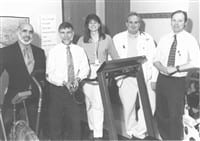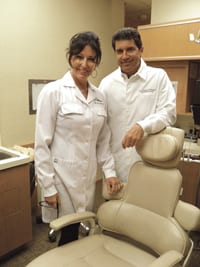Holyoke Hospital Opens New Pulmonary Rehabilitation Program
HOLYOKE — Holyoke Hospital recently opened a new Pulmonary Rehabilitation program that its creators say provides an important stepping stone between acute inpatient care and a simple return home for pulmonary patients.
The program, currently running on Tuesdays and Thursdays, provides patients the assistance that many need with post-hospitalization care, said Mohammad Bajwa, a Holyoke Hospital pulmonologist who serves as the director of the program.
“Patients may need re-conditioning, exercise, and understanding of their medicines,” he said. “Lung conditions are chronic, and some will need ongoing treatment. So after the acute care is done, we offer the option of continuing.”
Jeff Reed, manager of Physical and Occupational Therapy at Holyoke Hospital and overseer of the program, said its primary goal is to create “the maximum functional independence and endurance for patients.” By coaching them for a period after their hospitalization, the staff can provide pulmonary patients with tools they can use at home, he said.
Gail Lovett, the lead physical therapist for Holyoke Hospital, compares the new venture to the Cardiac Care Rehabilita-tion program the hospital provides. The physical therapy perspective on the program is to improve conditioning and help patients to be functioning as close to normal as possible when they return home.
“We focus on household tasks or walking up and down stairs,” she said. “Usually, once the patient gets to a safe functioning level, they just go home. This program hopefully will kick-start their recovery.”
John Orzechowski, a respiratory therapist at Holyoke involved with the program, focuses on getting patients to breathe more efficiently and use their medicines and equipment properly. After evaluating patients and checking their oxygen levels, he takes them on walks and monitors breathing techniques. He also encourages regular exercise to improve muscle tone.
“Poorly toned muscles mean you have to work harder to do tasks, and you use more oxygen,” he said.




Comments are closed.